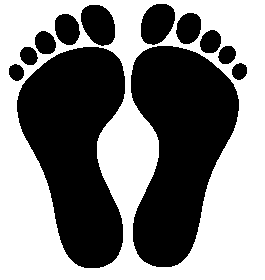Chirality (handedness) is a property of asymmetry.
Monosaccharides, also called simple sugar, are the simplest form of sugar and the most basic units of carbohydrates. They cannot be further hydrolyzed to simpler chemical compounds. The general formula is C
nH
2nO
n. They are usually colorless, water-soluble, and crystalline solids. Some monosaccharides have a sweet taste.
In chemistry, a racemic mixture, or racemate, is one that has equal amounts of left- and right-handed enantiomers of a chiral molecule. The first known racemic mixture was racemic acid, which Louis Pasteur found to be a mixture of the two enantiomeric isomers of tartaric acid. A sample with only a single enantiomer is an enantiomerically pure or enantiopure compound.

A Zeppelin bend is a symmetrical and inherently secure end-to-end joining knot. It is remarkable because it is stable and secure and totally resistant to jamming. It is resistant to the effects of slack shaking and cyclic loading. There is no load test that has managed to induce jamming. The structure fundamentally consists of two interlinked overhand knots (#515). The Zeppelin bend has point inversion symmetry.

Chirality is a geometric property of some molecules and ions. A chiral molecule/ion is non-superposable on its mirror image. The presence of an asymmetric carbon center is one of several structural features that induce chirality in organic and inorganic molecules. The term chirality is derived from the Ancient Greek word for hand, χείρ (cheir).
A chiral phenomenon is one that is not identical to its mirror image. The spin of a particle may be used to define a handedness, or helicity, for that particle, which, in the case of a massless particle, is the same as chirality. A symmetry transformation between the two is called parity transformation. Invariance under parity transformation by a Dirac fermion is called chiral symmetry.

Enantioselective synthesis, also called asymmetric synthesis, is a form of chemical synthesis. It is defined by IUPAC as: a chemical reaction in which one or more new elements of chirality are formed in a substrate molecule and which produces the stereoisomeric products in unequal amounts.
Homochirality is a uniformity of chirality, or handedness. Objects are chiral when they cannot be superposed on their mirror images. For example, the left and right hands of a human are approximately mirror images of each other but are not their own mirror images, so they are chiral. In biology, 19 of the 20 natural amino acids are homochiral, being L-chiral (left-handed), while sugars are D-chiral (right-handed). Homochirality can also refer to enantiopure substances in which all the constituents are the same enantiomer, but some sources discourage this use of the term.

In organic chemistry, helicenes are ortho-condensed polycyclic aromatic compounds in which benzene rings or other aromatics are angularly annulated to give helically-shaped chiral molecules. The chemistry of helicenes has attracted continuing attention because of their unique structural, spectral, and optical features.
Left and right or left–right may refer to:
In knitting, a yarn over is technique in which the yarn is passed over the right-hand knitting needle. In general, the new loop is knitted on the next row, either by itself or together with an adjacent stitch. The yarn-over may also be dropped on the next row, producing a longer stretch of yarn between the stitches of the previous row. Conversely, the effect of a yarn-over can be obtained by picking up the yarn between stitches of the previous row; the difference is that the yarn then is shorter, and the flanking stitches of the previous row may be overly drawn together.
Chiral resolution in stereochemistry is a process for the separation of racemic compounds into their enantiomers. It is an important tool in the production of optically active drugs. Other terms with the same meaning are optical resolution and mechanical resolution.
In physics, engineering and materials science, bi-isotropic materials have the special optical property that they can rotate the polarization of light in either refraction or transmission. This does not mean all materials with twist effect fall in the bi-isotropic class. The twist effect of the class of bi-isotropic materials is caused by the chirality and non-reciprocity of the structure of the media, in which the electric and magnetic field of an electromagnetic wave interact in an unusual way.

The Left Hand of the Electron is a collection of seventeen nonfiction science essays by American writer and scientist Isaac Asimov, first published by Doubleday & Company in 1972. It was the ninth of a series of books collecting essays from The Magazine of Fantasy and Science Fiction. The title comes from the topic of the first section which deals with chirality of electroweak interactions and chirality of organic compounds and the possible connection between the two. Other essays in this book concern the effect of electron-spin direction on molecular structure e.g. the "Inverse Sugar" in honey with philosophical reflections on the minority of left handedness in general.
The theme of chemical chirality, or the "handedness" of the molecular structure of certain substances, appears in many works of fiction.

The term chiral describes an object, especially a molecule, which has or produces a non-superposable mirror image of itself. In chemistry, such a molecule is called an enantiomer or is said to exhibit chirality or enantiomerism. The term "chiral" comes from the Greek word for the human hand, which itself exhibits such non-superimposeability of the left hand precisely over the right. Due to the opposition of the fingers and thumbs, no matter how the two hands are oriented, it is impossible for both hands to exactly coincide. Helices, chiral characteristics (properties), chiral media, order, and symmetry all relate to the concept of left- and right-handedness.
Metachirality is a stronger form of chirality. It applies to objects or systems that are chiral and where, in addition, their mirror image has a symmetry group that differs from the symmetry group of the original object or system.




